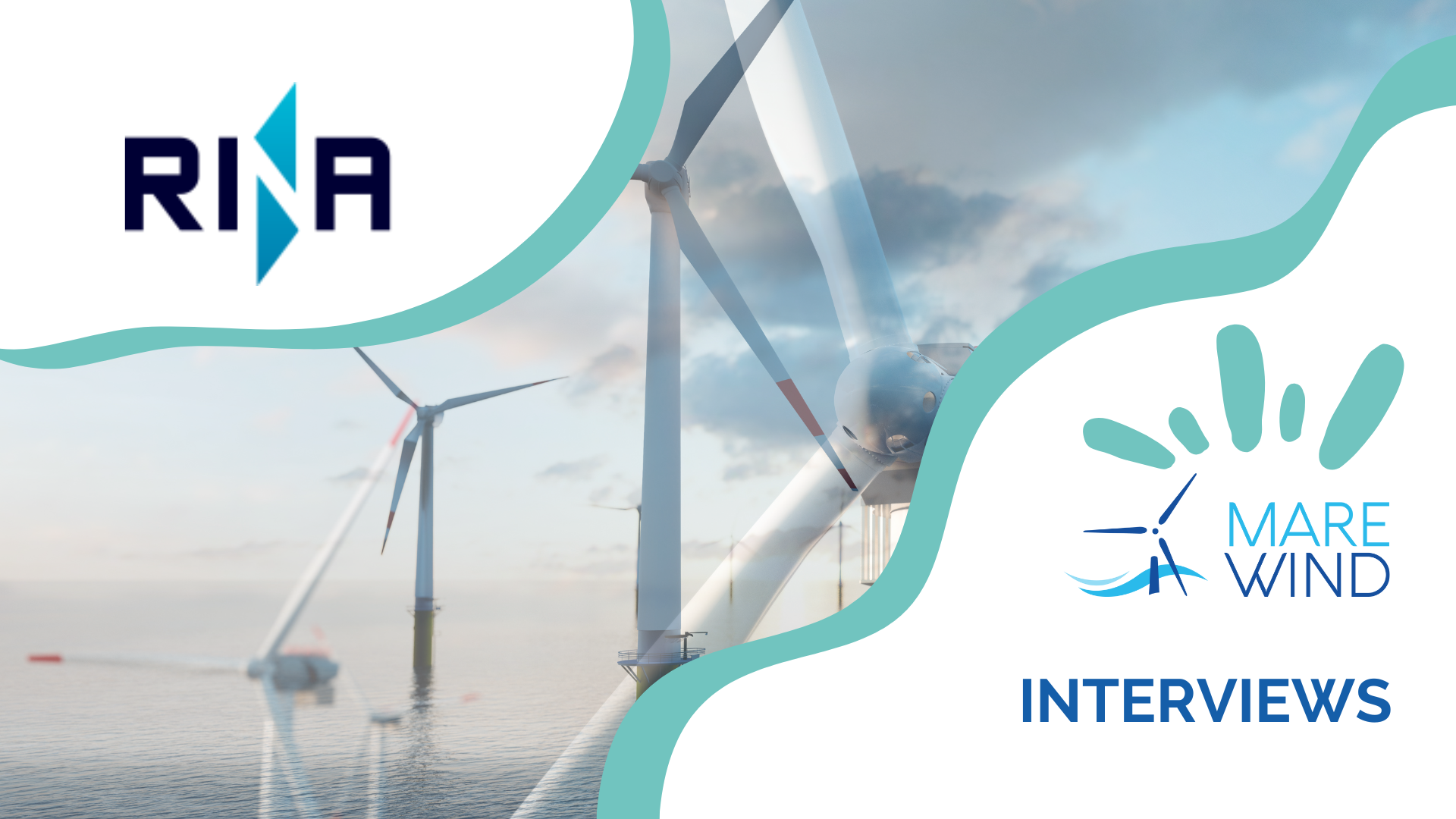RINA Consulting, leading comprehensive validation of Environmental, Economic and Social Impacts of MAREWIND
01 July 2024
Why did you join the MAREWIND project and what’s your role?
RINA Consulting joined the MAREWIND project to face the challenge of developing and validating new materials for the wind offshore sector. Our team has been involved in two main areas: sustainability assessment and predictive modeling with Finite Element model (FEM) Analysis.
How does RINA plan to support the technical validation activities for the results of MAREWIND, ensuring compliance with environmental, economic and social impact assessments?
Within MAREWIND, RINA plans to support the technical validation activities for the results of the project by leading a comprehensive evaluation across three key pillars: environmental, economic, and social impact assessments. Our main goal is to ensure that all assessments are iterative and integrated from the early stages, with primary data provided by our project partners and supplemented by reliable secondary sources when necessary. This approach guarantees a holistic and robust validation process, aligning with the project’s sustainability goals.
Additionally, we will integrate the results across the three key pillars, in an overall assessment, to determine the global sustainability performance of developed solutions, compared to conventional technologies.
Can you elaborate on the specific methodologies and approaches that RINA will employ in conducting the environmental, economic and social impact assessments for the project results?
RINA has a long experience in Life Cycle Thinking approach, i.e. a set of three different methodologies assessing the environmental (LCA), economic (LCC) and social (S-LCA) performances of a product or a service along its life cycle. In the framework of the MAREWIND project, the innovations are examined at turbine and product level, setting a comparison with the commercial references. The three comparative analyses cover the whole life cycle of the products, from their production to their disposal, from the different perspectives, giving as outcome the environmental impacts, costs, social risk of new solutions.
In what ways will RINA be involved in modeling and predicting the response of composite structures for blades to various environmental conditions? Can you discuss any innovative techniques or tools that will be utilised in this process?
In this context, we determined the material properties for the analysis through the development of an analytical design tool and Finite Element (FEM) models. Specifically, two FEM models were created: the first to validate the characteristics of the chosen material, and the second to support the design of the complete wind blade, considering the specified material and composition.
For predicting fatigue life, we are developing a custom methodology utilising ad hoc Python scripts in combination with the finite element model. Initially, the classical lamination theory was used together with a cumulative fatigue damage model, to forecast the stiffness degradation of the composite material over each fatigue cycle. To enhance the accuracy of fatigue life predictions, the results from the analytical approach are integrated with the finite element model of the blade.
What challenges do you anticipate in conducting the technical validation activities and modelling for the project, and how does RINA plan to overcome these challenges to ensure accurate and reliable results?
For sure, the innovative products could express particular materials composition that should be properly modelled in our analyses, as well as the low TRL of the technologies could affect the results for energy consumptions and related costs. For these reasons, we need to pay particular attention in the comparison with benchmark commercialised products, in order to make it as fair as possible.
Furthermore, effectively capturing the behavior of composite materials through modeling and ensuring the accuracy of analytical methods and finite element models present challenges. To ensure reliable results, RINA plans to address these challenges by implementing rigorous validation techniques, leveraging advanced simulation tools, and collaborating closely with partners and subject matter experts.
How do you see the future of the MAREWIND project?
MAREWIND products proved to have good sustainability and technical performances over the different modeling and validation assessments performed along the project. Their results are promising for a future distribution on the market, after a proper scale-up and technical improvement of their production process. These products could have an important role in the shifting towards a more sustainable wind-offshore sector.

